Intro :
I’ve been in the habit of carrying a second camera with me in addition to my E-M1 X or Mark III with 300mm or 100-400mm that’s in my bag. Usually, it’s either the E-M10 MK IV or the E-M5 MK III with a standard lens like the Oly 12-45mm Pro or Pany 12-60mm. However, even though these cameras are relatively small, it’s not always comfortable to have them hanging around my neck while I’m biking or walking in the woods. So, recently, I’ve started taking a third, the smaller Olympus TG-3 with me. It fits easily in a chest pocket or elsewhere because it’s so small. I got the TG-3 specifically for bushcraft because it’s tough and can handle water, dirt, and rough treatment. Unfortunately, there’s a downside – it has a smaller sensor, so the picture quality isn’t as good. Plus, and it doesn’t shoot in Raw, which limits my options.
Most regular small compact cameras that come with collapsible (super) telephoto lenses – like the Panasonic Lumix DMC-TZ90 with 20mp and 30x zoom – typically have smaller image sensors. Moreover, the mechanical parts of zoom lenses in these cameras are more delicate and prone to damage from dirt and dust – I’ve had that experience with two Samsung WB series cameras, both defective due to dirt in the mechanism of the lens. In essence, APS-C cameras without weather sealing are sturdier and less susceptible to harm compared to small, all-in-one compact cameras. This led me to explore smaller cameras with interchangeable lenses and micro four third sensors.
a Tiny Every Day micro 4/3 Camera :
I didn’t expect much, because even if the camera itself is small, the interchangeable lens is always the problem. However, there are some very small and compact lenses available on the market, so that’s the second thing I’m looking for: a tiny lens for everyday use.
Another thing I think is important and practical is that the camera should ideally use the same batteries as my E-M10 MK IV and E-M5 MK III. When multiple cameras use the same batteries, it gives you more flexibility. It’s easier to manage, and it also reduces the overall weight you need to carry. However, if you’re interested in finding a compact camera on your own, and don’t mind different battery’s, the decision is entirely up to you.
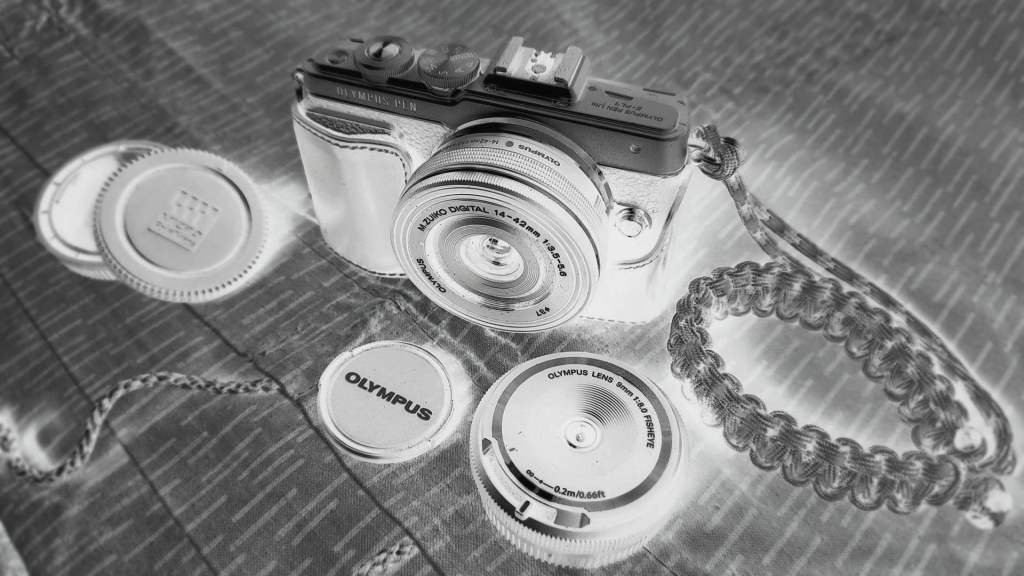
The Olympus E-PL7 :
Back in February 2023, I wrote about “The Olympus E-PL7 Rangefinder Style Camera.” So, I already had a smaller camera than the E-M10 or E-M5, but my goal then was to get a camera with the look like an old-school half frame analog Pen camera, not necessarily the smallest one. However, It was a starting point, and I wanted to see if the camera could meet my new criteria. as lens I used an Olympus EZ 14-42mm f3.5-5.6 lens, and the Olympus 9mm f8 Fisheye bodycap lens, which I had on hand.
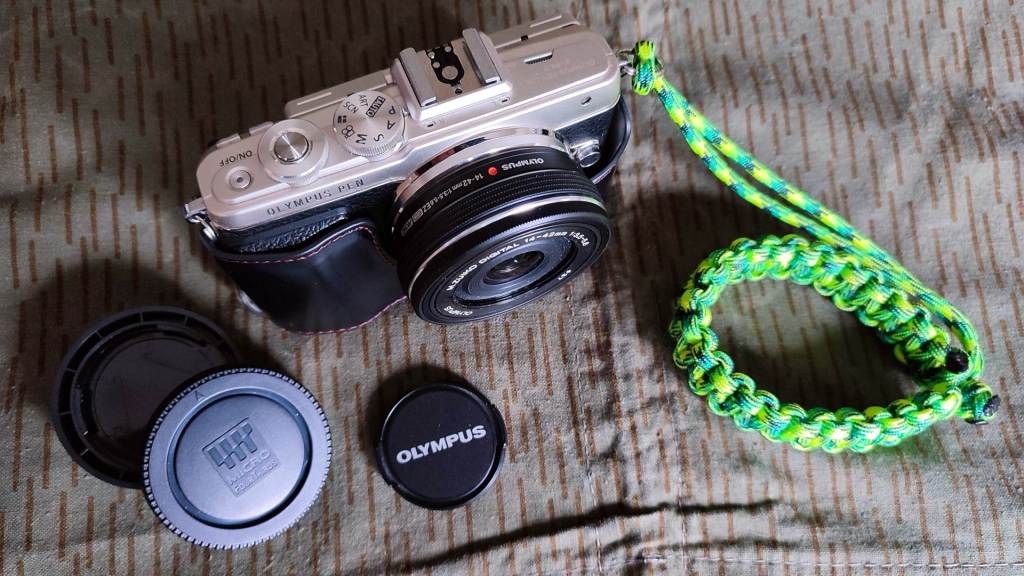
The Olympus E-PL7 camera weighs 357 grams and has dimensions of 115 x 67 x 38 mm. When you add the EZ 14-42mm lens, it becomes a total of 454 grams (including the lens cap) and measures 115 x 67 x 65mm. This made it a bit too heavy and big to comfortably fit in a chest pocket.
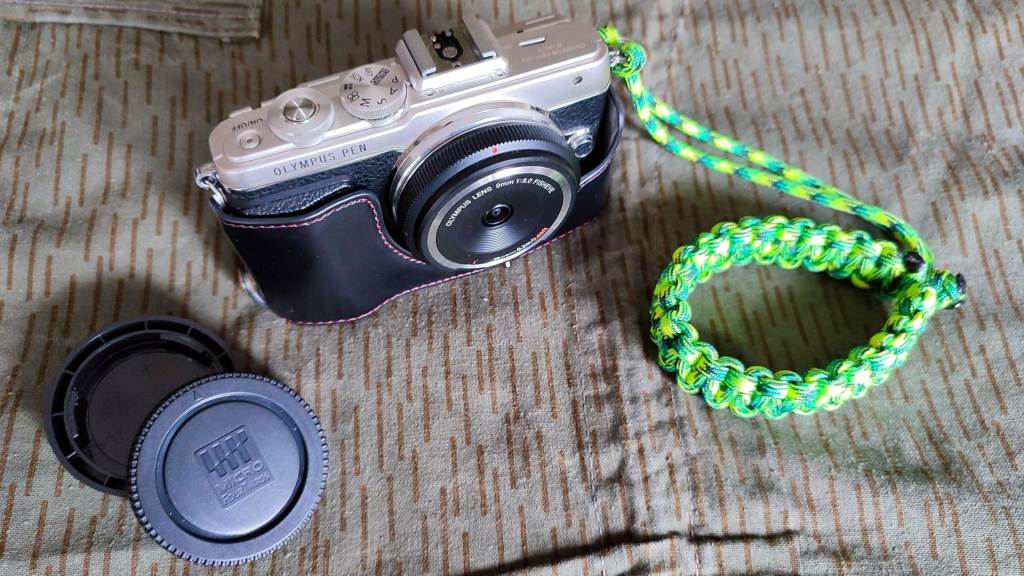
If you put a camera in your shirt or chest pocket, you don’t want your clothes to be completely pulled out of shape, that doesn’t feel comfortable and doesn’t look good either. With the body cap lens the dimensions are 115 x 67 x 51 and weight 389gr – so 14mm narrower and 65gr less than with the 14-42mm lens, which is great. That solved the problem partially, although it’s still a chunky combination, but it was a start.
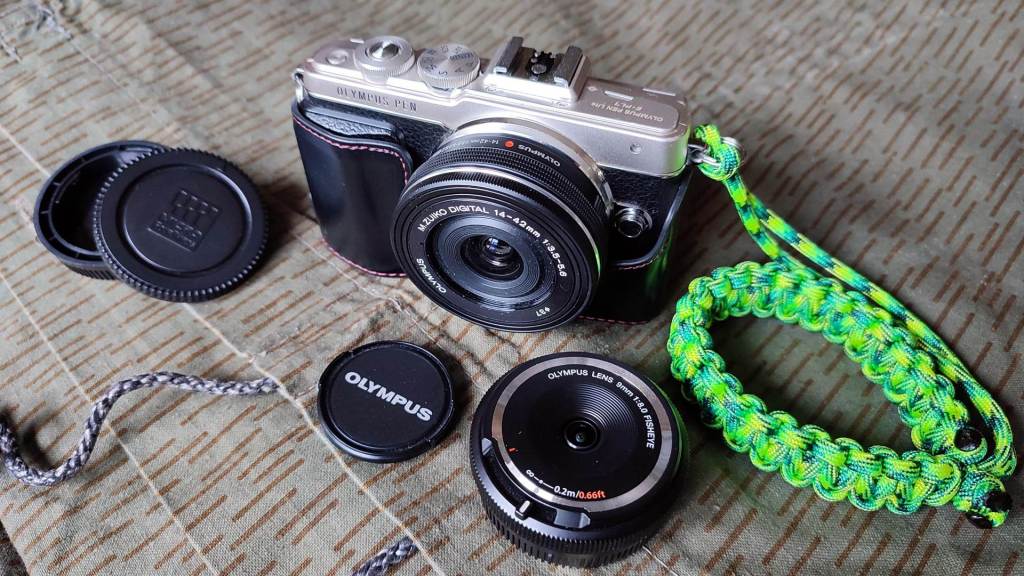
In summary :
The E-PL7 checks off the criteria in many aspects. The camera is more compact, less tall, and thinner compared to the E-M10 MK IV, and it’s also 30 grams lighter, which might not be a significant difference, but it’s noticeable. The battery is the same as many other Olympus cameras, and with its 16 megapixels, it’s certainly capable of serving as a pocket camera, and fits easily in any jacket pocket, but there’s room for improvement.
So, let’s find out in part two how much improvement can be made in terms of smaller cameras and also lenses.
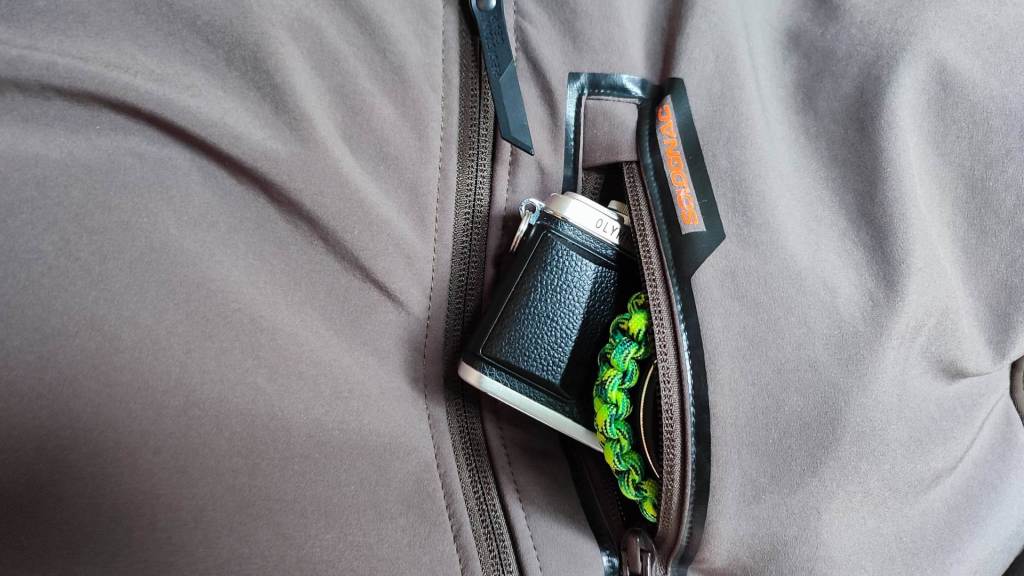
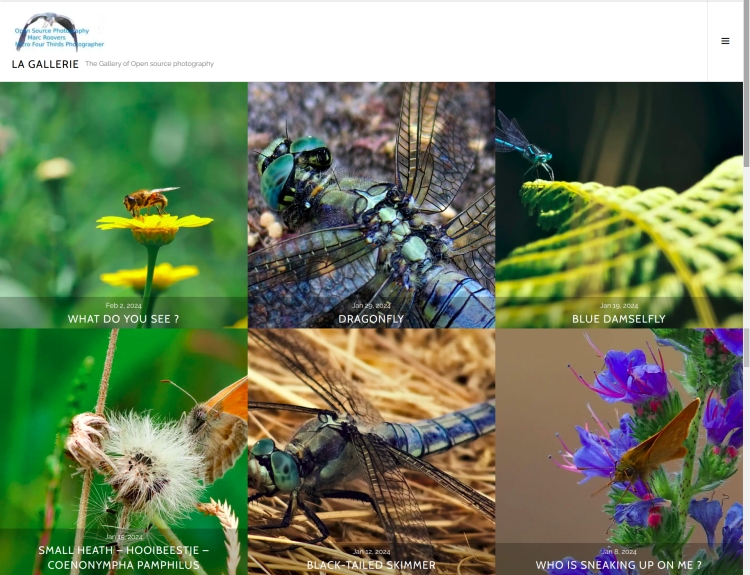
The photo gallery of Open Source Photography, Olympus micro 4/3 system, Vintage Lens Photograpy, Film Simulation, PictureFX, HDR – Photographer : Marc R.
Discover more from Open Source Photography
Subscribe to get the latest posts sent to your email.


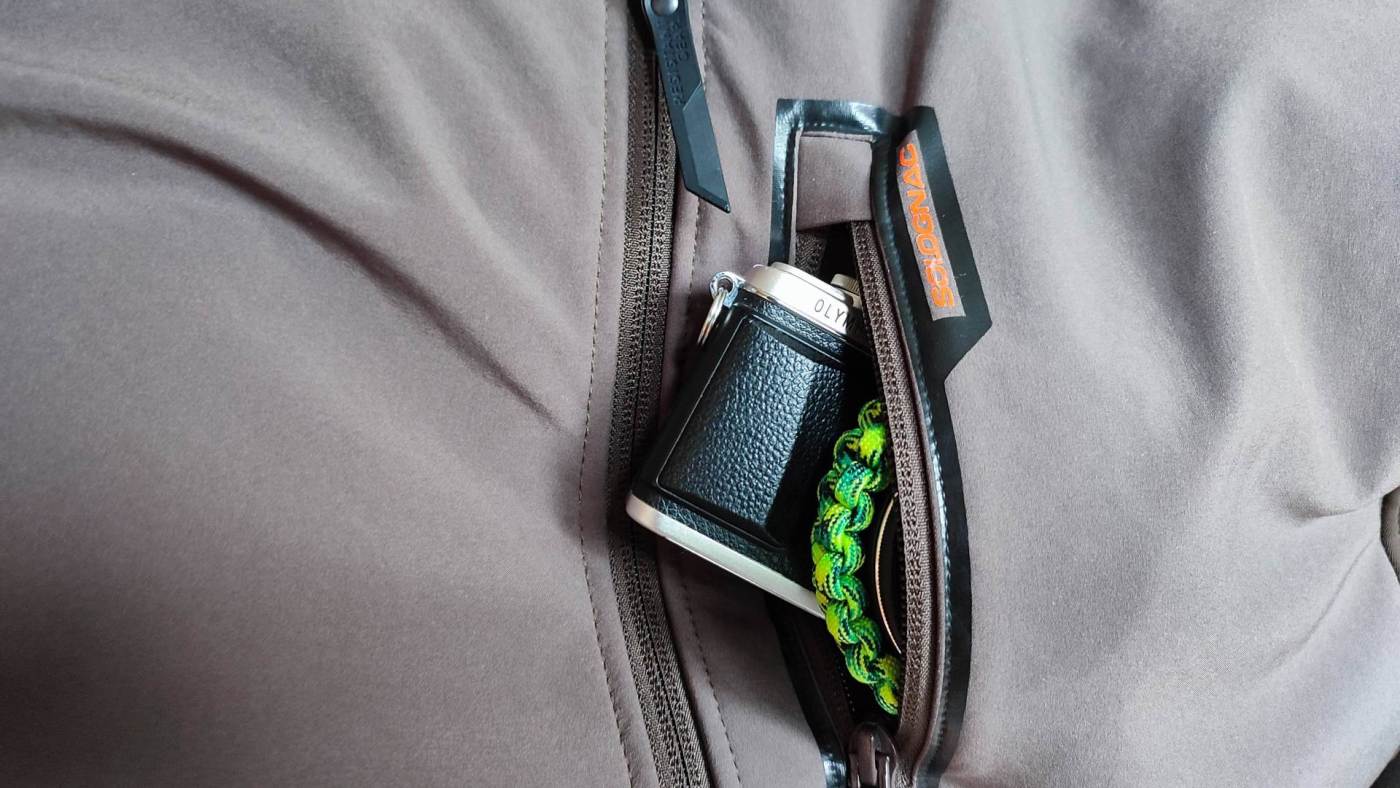

I really loved my little E-PL8, it was a great camera. Hope you have fun. I’ve been doing less photography lately, but I’ll get back into it soon.
LikeLike
When I bought my E-PM1 years ago I wasn’t that impressed with it, it was mainly the lack of EVF that I hated, but back then I mainly shot DSLRs with optical EVF and that’s a big difference. In the meantime, I have learned to appreciate the rear LCD, and now I find it great for street photography or where there is a lot of people – with the LCD at 90° as a waist level viewfinder, it is not even noticeable that you are taking photographs. The jpg output of the E-P series is also great, and indeed the E-PL8 is still the best choice at the moment. Take care Mark !
LikeLiked by 1 person